|
|
Red-rumped Wisp - Agriocnemis rubricauda
FAMILY COENAGRIONIDAE
This page contains information and pictures about Red-rumped Wisp that we found in the Brisbane area, Queensland, Australia.

- Male, body length 30mm
- The damselfly has the very bright orange-red tail. Its body is pale green and black in colour. We first saw this damselfly along Bulimba Creek in Yugarapul Park 2004. It was a male, medium size, with pale green body and bright orange tail tip.
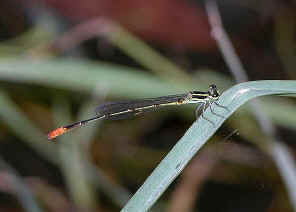
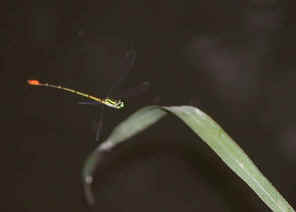
- We took the photos late in the evening, while the sunlight was about to ease. The damselfly's tail of bright orange spot was outstanding from the dark surroundings.
- From the reference information, in Australia there are three damselflies with orange-red tip. All three can be found in Brisbane, although we need some luck to find either one of them. They are the Pygmy Wisp, this Red-rumped Wisp and the Red-tipped Shadefly.
- In 2006 Feb, we saw this damselfly on a small creek in Karawatha Forest. We saw a few of them. They were resting on grasses above water. Where was a shaded area, covered with dense tall trees. The orange-red tail of the damselfly make them outstanding on the dark water surface.
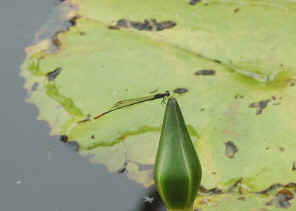
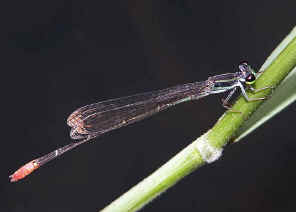
- We noticed that some of them have the clear wings and some have wings with orange wing tips. We suspected those wing tips orange colour may be the pigment gained from its tail when the damselfly rubbed its wings on it.
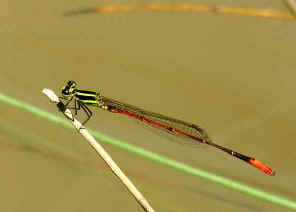

- Some of the damselflies with dark orange abdomen. They are the immature males. The females have the all orange abdomen, which we have not found them yet.
- Once we knew this damselfly can be found in Karawatha Forest, we found this damselfly is fairly common on the Forest waters, include lagoons and creeks.
- On Oct 2011, we found a small group of them in Buhot Creek Reserve.

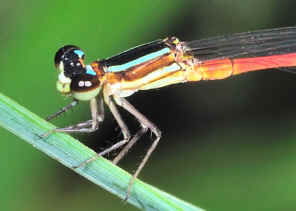

- Male






- Female


- Reference:
- 1. The Australian Dragonflies - CSIRO, Watson, Theisinger & Abbey,1991, p124.
- 2. A Field Guide to Dragonflies of South East Queensland - Ric Nattrass, 2006, p31.
- 3. The Complete Field Guide to Dragonflies of Australia - CSIRO, GŁnther Theischinger and John Hawking, 2006, p104.
